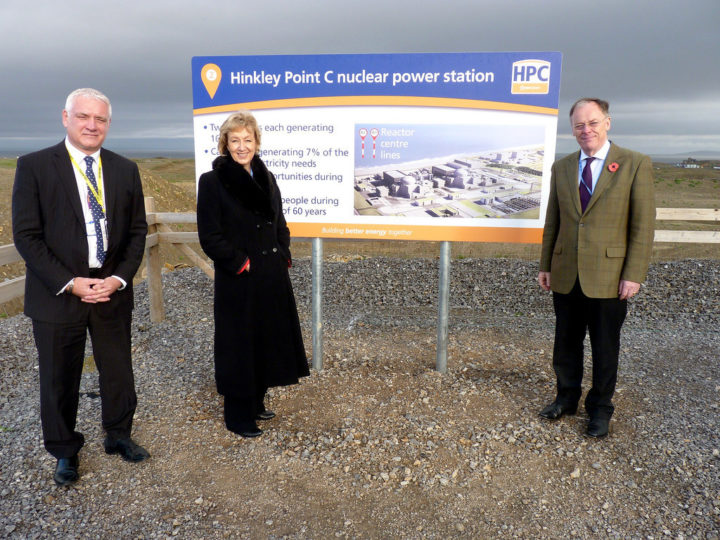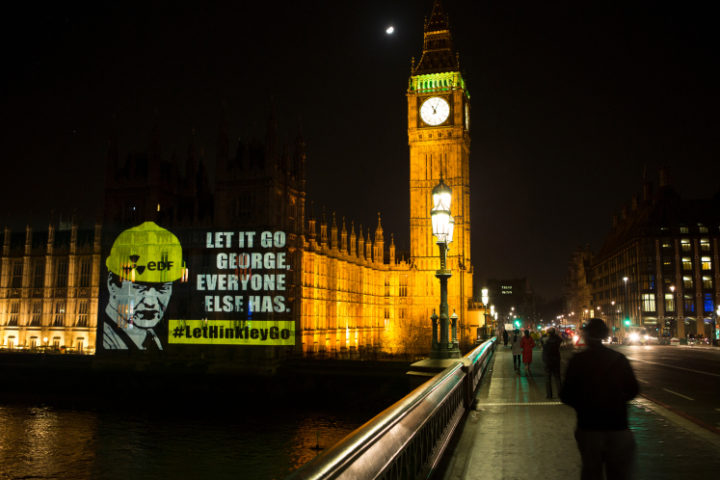Hinkley - what if it all goes wrong?
A new ECIU report shows that Hinkley C is not essential for solving the energy trilemma
By Jonny Marshall
Share
Last updated:
View ECIU's new report here
The saga of the Hinkley Point C nuclear power station has been with us now for nearly a decade, ever since Vincent de Rivaz, Chief Executive of EDF Energy plc, famously promised that we would be cooking our Christmas turkeys with Hinkley electricity in 2017. Yet still, the end of the story remains unwritten.
Following an unexpected intervention just hours after EDF finally signed off on the deal, Prime Minister Theresa May is due to decide next month whether to give her blessing to the £18bn project. Even if she does, a host of potential stumbling blocks remain, including potential legal cases in France, EDF’s parlous financial situation, Hinkley’s unpopularity with French unions in an election year, and the evidently formidable challenges of building a European Pressurised Reactor (EPR). So, while Mrs May can conclude that “Brexit means Brexit”, it is not at all clear that in the Hinkley context, “final” means “final”.

Proponents, including some former Conservative and LibDem ministers, insist that Hinkley C is absolutely necessary for solving the energy “trilemma” – ensuring security of supply and reducing carbon emissions while keeping bills under control. Since de Rivaz promised us turkey in 2007, electricity systems have moved on apace. The heads of the UK and Chinese National Grids have suggested the era of baseload is coming to an end, to be replaced by flexible systems in which ever-cheaper renewable generation is balanced by demand-side response, interconnection, storage and rapidly-responding gas-fired units. The National Infrastructure Commission and EnergyUK have both said the UK should adopt a “smart” flexible system. This raises a separate question of whether Hinkley C would usher in a new era of white-hot technology, or perpetuate the age of the dinosaurs.
And to use another Harold Wilson line, Hinkley’s nuclear electricity will certainly not be too cheap to meter. The contract that the government is proposing to sign guarantees EDF £92.50 per megawatt-hour; that is in 2012 money, and index-linked for a guaranteed 35 years. The contract incentivises EDF to run the power station as much as possible, even if the wholesale price falls below zero.
This means, we calculate, that UK customers will pay a total of £2.5bn per year to EDF; if the cost were borne by householders, this would represent £92 per year on the average bill.

With the project under such intense scrutiny, it seems prudent to ask: If Hinkley is cancelled or runs into long delays during construction, what are our alternatives? How much will they cost? How will we keep the lights on? And will we retain progress towards a decarbonised power grid by 2050?
A new report from the Energy and Climate Intelligence Unit (ECIU) shows that Hinkley is not essential for solving the trilemma. The power generated could be easily replaced by building four big offshore wind farms or three new interconnecting cables, or a mixture of the two.
Increasing energy efficiency – widely heralded as the lowest of low hanging fruit in terms of managing the power sector – could negate at least two-fifths of Hinkley’s output, while currently underutilised technologies like demand side response could shave gigawatts off the “firm” capacity needed to match demand on even the coldest winter evening.
Compared to the eye-watering figures involved in building Hinkley, all the alternatives identified could save the UK money. Hinkley will pump out around 25.2 TWh of electricity per year: generating this power from wind farms could cut the average household bill by £10-20 per year, while replacing the capacity with peaking gas plants – which would only need to run when demand spikes – could save £16 billion in infrastructure costs.

A large number of new plants, interconnectors and other infrastructure will be built anyway, as old equipment reaches the end of its lifetime. Hinkley will form only a small amount of this capacity. Instead of EDF’s “white elephant”, a proposed scenario containing a sensible mixture of the alternatives could save the UK around £1billion per year, in addition to avoiding the 35-year contract currently on the table that could lock the power sector into an increasingly outdated model of large, centralised generators and passive consumers.
Finally, it is worth noting that the report is highly conservative, considering only mature technologies rather than placing hope on those just entering the market or yet to be commercialised. Critics of Hinkley have backed technologies such as storage, tidal power and small modular reactors which, although highly promising, are untested on the utility scale. This report considers only proven infrastructure that could be developed now, at known costs.
Considering the pace of change in the energy sector – wind and solar costs tumbling, the emergence of as-yet unknown technology and changes resulting from developments in the political landscape – it is entirely feasible to suggest that the replacement of Hinkley will be even cheaper and easier than reported.
Therefore, as Theresa May kicks off the post-Cameron era with a huge decision on her hands, we believe that our findings represent good news for the Government. If Hinkley fails to materialise, for whatever reason, the lights will stay on, decarbonisation will continue and bills will fall.
Share